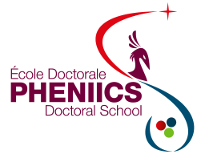Orateur
M.
Abdullah ABUDRA'A
(CEA)
Description
Contact radiotherapy by X-Rays generator is a cancer treatment technique using low energy X-Rays (≤ 50 keV). This technique became more reliable after the latest evolutions of the X-Ray tubes, and hence, led to the development of new treatment devices, such as INTRABEAM® and Papillon 50®. The irradiation is done in contact with the tumor so it receives a high dose while preserving neighboring healthy tissues. Different applicators are used with such devices to treat diverse types of cancer. These applicators vary the form of emitted beams, i.e. collimated or over 4, and hence, they vary the spatial distribution of the absorbed dose that is delivered during the treatment. To provide the prescribed dose to patients using such devices, the medical physicists rely today on the databases of absorbed dose distribution in water provided by manufacturers.
This thesis is aimed at establishing appropriate primary standard in terms of air kerma, Kair, and absorbed dose to water, Dw, in order to calibrate the relative spatial distribution of absorbed dose delivered during such treatment. Primary standard are established based on a free-air ionization chamber. Moreover, a new currently developed dosimetric gel is used to assess the 3D spatial distribution of the relative absorbed dose around the X-Rays source.
The first step was to demonstrate that the used gel was adapted to the low energy photon range. Then a protocol was developed to calibrate the gel, in terms of dose and energy response. The current step is to set the Kair and Dw standard. For this purpose, we are characterizing and reproducing some contact radiotherapy beams using a standard X-Rays generator available at LNHB. Moreover, the free-air ionization chamber used to establish the primary standard was modeled using several Monte codes in order to calculate factors required to correct for the effects of practical limitations on the measurement.
Auteur principal
M.
Abdullah ABUDRA'A
(CEA)
Co-auteurs
Mlle
Christel Stien
(CEA, LIST, Laboratoire National Henri Becquerel (LNE-LNHB), CEA-Saclay 91191 Gif-sur-Yvette Cedex, France.)
Prof.
Isabelle Aubineau-Laniéce
(CEA, LIST, Laboratoire National Henri Becquerel (LNE-LNHB), CEA-Saclay 91191 Gif-sur-Yvette Cedex, France.)
M.
Jean GOURIOU
(CEA, LIST, Laboratoire National Henri Becquerel (LNE-LNHB), CEA-Saclay 91191 Gif-sur-Yvette Cedex, France.)
M.
Johann PLAGNARD
(CEA, LIST, Laboratoire National Henri Becquerel (LNE-LNHB), CEA-Saclay 91191 Gif-sur-Yvette Cedex, France.)
M.
Marc DENOZIERE
(CEA, LIST, Laboratoire National Henri Becquerel (LNE-LNHB), CEA-Saclay 91191 Gif-sur-Yvette Cedex, France.)



